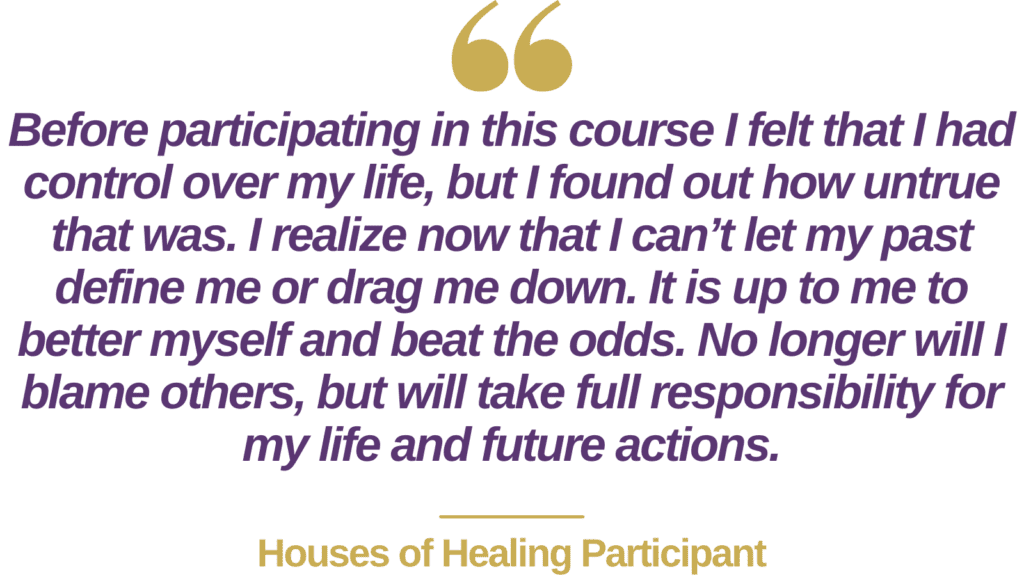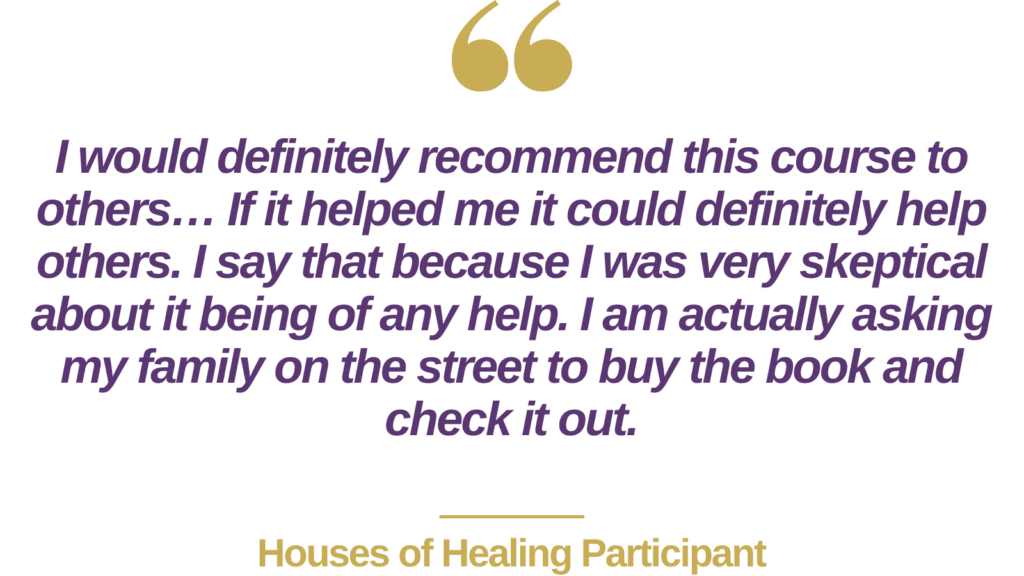What Makes Prison Programming Effective?

by robin casarjian
Studies have shown that more than 50% of incarcerated people have been incarcerated more than once. Inherent in this statistic is the enormous misery and pain for families, victims, and the accused that comes with this territory. (There is also the monetary cost, often tremendous, that could be redirected to early childhood programs, youth services, community-based programs, housing, job training — etc.) According to the Anna E. Casey Foundation more than 6 million kids are impacted by parental incarceration. The case for providing effective rehabilitative programs (available without undue wait times) and potently incentivizing people to participate should be a clear-cut mandate for every prison and jail system. This would both reduce recidivism and the untold collateral suffering — yet this is often far from the reality.
I don’t know the percentage of incarcerated people who have access to or participate in programming as this data isn’t available and it, no doubt, varies dramatically from state to state. Some people who are incarcerated don’t participate in a single rehabilitative program for years after entering the system, like one man who attended a Houses of Healing course that I facilitated: after 8 years of incarceration, it was the first program he had ever attended. There are a number of factors that influence a lack of participation in rehabilitative programming.
First, programs have to be available. If prison systems (and legislatures) don’t prioritize and adequately fund rehabilitative efforts and/or miss the mark when it comes to (1) providing effective programming or (2) incentivizing participation — then a critical opportunity to empower people to turn their lives around is squandered.

Because prison programs are trying to engage a population, many of whom shy away from learning new things and reading and writing because of learning disabilities, ADD, negative school experiences, poor self-esteem, mental health issues, and a profound sense of resignation, without strong, significant incentives they often lack the motivation to participate. Plus, there is a great deal of negative social contagion in prison — feeling vulnerable and lost in the inside easily translates into a mask of toughness, invulnerability, and “I got this — I don’t need anything from you.” Incarcerated people in all security settings need strong incentives (like time off their sentence, lower security housing, certificates for their parole file, the possibility of certain jobs within the prison, etc.) to encourage participation in something that is otherwise threatening to them. When incentives that are perceived as valuable are offered, participation often increases dramatically. Offering effective programs and strong incentives to participate should be an obligation of every prison administration — because without both, there is much less participation and consequently less transformative change, greater recidivism, relapsing, and profound and inevitable suffering for many. Without effective programs with strong incentives, any “correctional” or “rehabilitative” mandate is significantly undermined rather than enhanced.
In Lionheart’s Making Time Count program, participants must first sign a registration form committing to at least 30 minutes of “Self-work” a day during the span of the program. (This includes reading, completing worksheets, and practicing self-regulation techniques.) Without strong incentives, for those who are poorly motivated, signing up is a no-go from the start. (Receiving the incentives assumes clearly demonstrating genuine effort and participation.)
Many institutions offer education programs where people can earn a GED (or other high school equivalency degree) and some even offer college classes that can result in an Associate and/or Bachelor degree (and in rare cases, a Masters degree). Some prisons offer programs that teach trades or other employable skills so that those who are released have an increased chance of gainful employment. There are also religious programs. All of these, in and of themselves, can have a life-changing impact for some. That said, the importance and potentially life-transforming impact of providing psycho-educational programs that teach emotional regulation skills and nurture emotional awareness and healing by, among other things, explicitly addressing the underlying issues of trauma and post-traumatic stress that propel so much addiction and criminal behavior, is imperative for systems to be truly “corrective” and “rehabilitative.”
Most people who are incarcerated will be released. As I mentioned in an earlier blog, “We can’t choose what we don’t yet know exists.” People must be exposed to effective ways to respond to stressful situations and ill-guided impulses and ways to heal emotional wounds in order to choose them. And when the extrinsic rewards for doing this challenging work are sufficiently attractive, many will mobilize the motivation and courage to put themselves in a position where they are introduced to and encouraged to embrace new, liberating, and empowering possibilities.

Visit lionheart.org/lionheart-programs/houses-of-healing for more information on our prison program.
